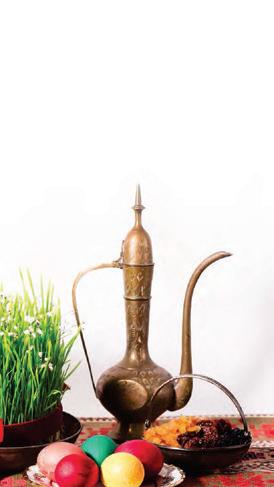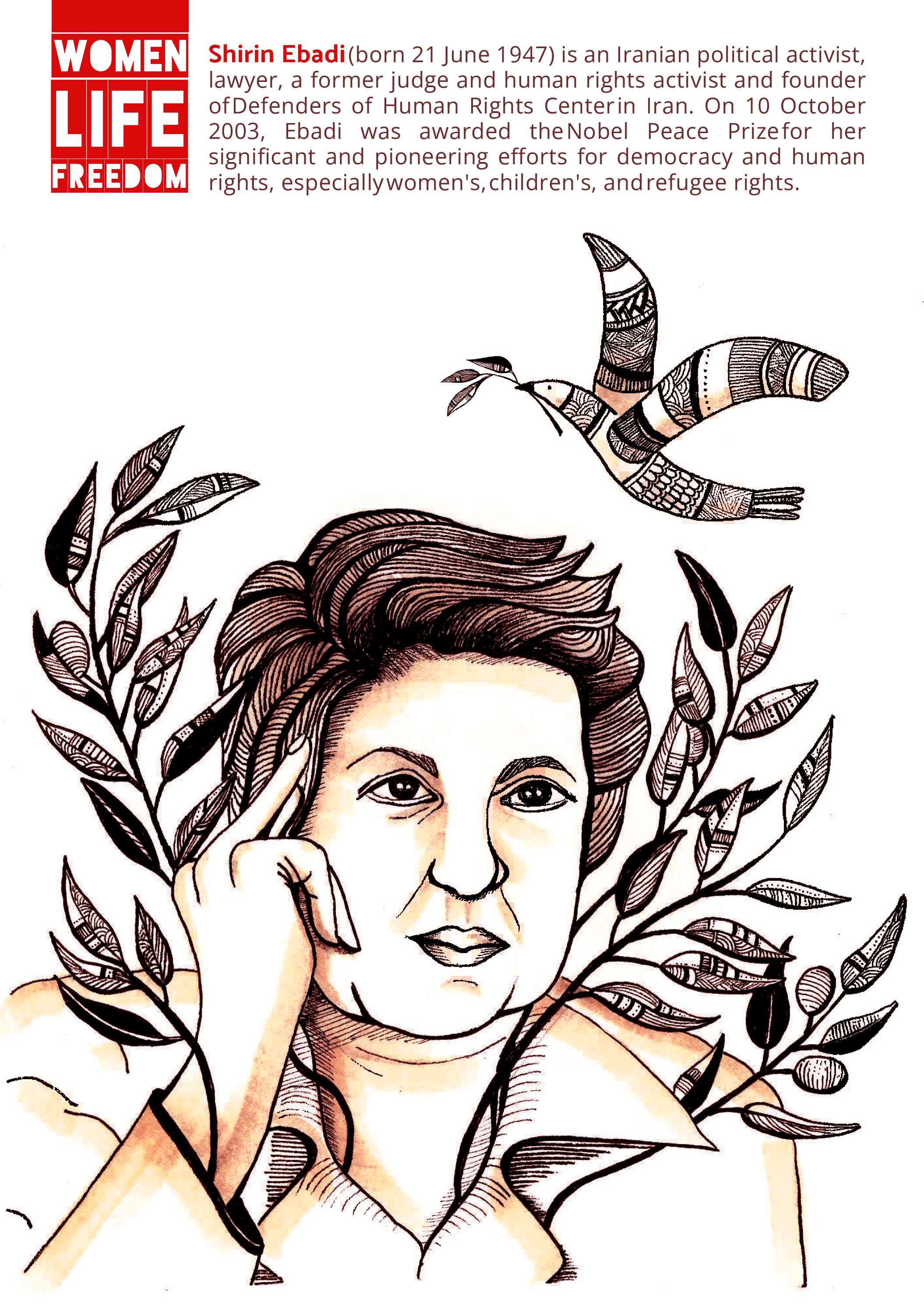Hello!
With a passion for visual storytelling and a proven track record in creating compelling content across multiple platforms, I am Negar, a passionate graphic designer and illustrator with both employment and voluntary experience. Over the years, I have had the privilege of collaborating with diverse brands and businesses, enhancing their visual experiences and contributing to their growth through the power of design. From executing multiple print and web projects to focusing on publishing, advertising, brochures, and branding, I consistently strive for excellence in every aspect of my work. Armed with a bachelor’s degree in Graphic Design and a master’s degree in Illustration, I bring a comprehensive skill set in utilizing Adobe Creative Cloud and other relevant software. My ability to manage multiple projects, meet deadlines, and effectively communicate design choices to key stakeholders sets me apart. I am known for my leadership, analytical thinking, problem-solving skills, and collaborative teamwork, which have enabled me to lead projects from concept to completion. Whether it’s executing high-quality print and web projects or focusing on design work in publishing, advertising, brochures, and branding, I consistently strive for excellence in every aspect of my work. I am driven by a desire to learn and grow, making me eager to take part in a trainee program and contribute to the success of your organization.



Nowruz Music
Elham
Iran, Musical Instruments, songs
in toady Iranian music. Chardin, the famous French tourist of 17th and 18th century who visited Safavid court described the art of musicians in the countdown to the new year and in the presence of the king as below: “The New Year will be announced by shooting bullets and the sound of different musical instruments such as drum, horn, flute and nagara, and hence the celebration, joy and happiness starts between the audiences and heads of the country”.

Rituals of Nowruz The music of Nowruz was not exclusively limited to the courtiers, since the very past till now the
into different ranks during the Sassanian era and the Ashkanid dynasty. One rank belonged to the musicians with special position before the king. Evidence shows music was commonly played at the court in that era. Music underwent evolution after the advent of Islam. Shah Abbas (1588-1629 AD) of the Safavid era loved music so much. One of the masterpieces of that era called Aliqapu mansion, the king’s splendid palace and its upper floor called the music room. The walls of the room are equipped with stucco-work and cutout shapes that apart from their beauty act as tools to prevent musical echoes, so that sounds could be heard naturally. Shia Islam became the official religion of Iran during the Safavid era. This led to the development of religious music that in turn preserved lots
of ancient melodies of Iran. Playing Naqareh, which is kind of drum, also played an important role in preserving Iran’s national music. The instrument was in vogue until the ending years of the Qajar dynasty. It fell out of fashion under Naseraddin Shah of Qajar, especially after Europeans gradually brought marshal music into Iran. Naqareh composed of two brass drums that join in the middle. It is played by a pair of beating sticks. Music became documented and disciplined in order to be taught to the royal family in the Qajar era. Aliakbar Khan Farahani was a Tarplayer and a musician who found his way into the court. He devised Radifs for Iranian music in seven dastgahs (musical systems). His classification currently taught at universities. Finally in 1940 Iran’s first radio broadcaster started working. The radio played different Iranian and foreign music. That made music common in Iran. People in every part of the country could listen to music and great artists could make their compositions heard. Iran’s ancient music has had ups and downs during the course of history. It is now in our hands in modified way. Lots of renowned artists work in this field these days. Music of the regions Iran’s folklore music is divided into five: the music of the northern part, and those of the western, central, southern and eastern parts of the country. The music of Iran’s north: belongs to the two regions of Gilan and Mazandaran. Gilan’s music inspired by the immaculate nature and the humid weather of the region. Shepherds play flutes out in the wild. Women sing rhymes as they work in rice paddies. Drums and horn instrument called Sorna are also used in weddings.






Delicious Taste of Nowruz
Food and culture are two inseparable elements. In other word, food is an element of each society which forms the culture. In this regard, Nowruz as the most important and the largest celebration of the Iranian is not an exception so that from the middle of the last Iranian month, one of the concerns of the people who prepare themselves for the countdown of the New Year and coming holiday is to provide special meals and foods of these days. The dishes of Nowruz can be classified into three groups of special dishes for haft-sin (seven symbolic items whose names start with the letter sin of the Persian Alphabet) table, Nowruz dinner and meals for entertaining the guests.

- Shah Abbasi: a design in carpet which was soared in Safavid Dynasty. The main feature of Shah Abbasi flower is the stem drawn at the end of flower and is used as 5, 7 and sometimes 12-petal flower. It is the most perfect type of khatai and its design is retrieved from lily and pomegranate flowers which was common in Iranian arts from the past, a typical example of using this design can be seen in Persepolis which was converted into Shah Abbasi flower through a lot of manipulations.

- Botteh: it is an abstract design and the Iranian believe it is retrieved from cypress tree as it was a sacred tree in ancient Iran, its natural samples and not decorative ones can be observed in relief designs of Persepolis. Besides, cypress tree is a symbol of endurance and freedom among the Iranian and in this period Botteh design was used decoratively which was similar to the bent cypress and in its evolutionary stages, with respect to the artist’s taste and creativity of each region and cultural history of Iran, it is currently known as paisley. Some individuals believe that Botteh is created from birds’ feather which was used by the Iranian kings on their hats.
Different Parts of Carpet
Selvedge: it is the surrounding part of carpet which is usually designed and woven in a wide or narrow way. The selvedges lead to a special organization and beauty which are like a frame. An ordinary selvedge consists of three parts: one main selvedge and two subsidiary selvedges.
- Main Selvedge: the wide selvedge is located between narrow selvedges and forms the collection of carpet selvedges with them. Usually in wide selvedge, the motifs used in carpets are also applied. The pattern and design of this selvedge are commensurate with background of the carpet. In wide selvedge, different designs and inscriptions are used and characteristics of the carpet including name of carpet weaver, name of client, date and place of weaving are registered as well.
- Subsidiary Selvedge: it is located in two sides of main selvedge and is usually decorated with tiny geometric and floral designs.
Lachak: the four corners of the carpet are called lachak and if there is harmony between lachak and toranj with similar designs, the design of carpet is called lachak – toranj.
Toranj: the shape located in the center of carpet is called toranj. They are usually in the form of circle, diamond and oval. They are usually accompanied with sar-toranj which makes the carpet more attractive. The dimensions of toranj are different in various carpets and their bigness or smallness depends on type and design of the carpet. Sar-toranj: it is connected to the central toranj from top and bottom of the carpet. Many of the carpet designers call it “Shamseh” as well.
Katibeh (Inscription): in some carpets, there is a part between toranj and sar-toranj which is called katibeh, name of some individuals who are related to the design of carpet will be designed and registered in katibeh.

Zamineh (Background): different parts of the carpet such as flowers, branches, animals and geometric shapes are woven and registered on a background which specify the main color of the carpet.
Gelim Baaf: in order to preserve the durability of the carpet, its upper and lower parts are woven with chains which are called gelim baaf.
Risheh (Fringe): white threads woven to the width of both sides of the carpet.
Shirazeh (Binder): the longitudinal sides of the carpet which are sewed for more protection of the main part of the carpet. What was explained above is related to the commonest design of the carpet in Iran i.e. lachak toranj (corner-medallion) but based on the classification of Iran carpet company, the main designs of the Iranian carpets are: designs of ancient works and Islamic buildings, Shah Abbasi, Eslimi, Afshan (overall flower), Eghtebaasy, Bandi, Bottheh, Derakhti (Tree), Turkmen (Bokhara), Shekargah (Hunting), Ghabi, Golfarang, Goldani (Vase), Mahi Dar Ham, Mehrabi (Prayer), Moharamat (Striped), Hendesi (geometric), ili and Talfighi (mingle).
Shirazeh (Binder)
Gelim Baaf
Subsidiary Selvedge
Main Selvedge
Eslimi
Lachak
Sar-toranj
Risheh (Fringe) Toranj
Khatai Botteh
Zamine (Background)
Shah Abbasi
Selvedge of Carpet
History of Persia at a Glance Prehistory
History of Persia at a Glance Prehistory
The oldest known tools: 800 thousand years ago
The oldest known tools: 800 thousand years ago


History period
Number of Kings: 4
Duration: 165 years
Number of Kings: 4
Duration: 165 years
Duration: 427 years
Ilkanid
Duration: 96 years
Duration: 96 years
Timurid
1506 M - 1370 M
Number of Kings: 11
1506 M - 1370 M


Duration: 109 years
Number of Kings: 11
Achaemenid
1500 M - 1723 M
Number of Kings: 10
1500 M - 1723 M
Duration: 223 years
Number of Kings: 10
Duration: 223 years
Duration: 471 years
Duration: 471 years
Islamic period
Islamic period
Elam Med Seleuci Parthian Sasanian Seljuq Khwarazmian


From the entrance of Islam to the first five Islamic centuries:


Safavid Zand




1751 M - 1794 M
Number of Kings: 9
1751 M - 1794 M
Duration: 43 years
Duration: 109 years
Duration: 156 years
Duration: 156 years
































Negar Ganji| Graphic design portfolio
Duration: 190 years
Duration: 190 years
1935 M - 1979 M
Number of Kings: 2
1935 M - 1979 M
Duration: 54 years
Number of Kings: 2
Duration: 54 years
Afshar
1736 M - 1804 M
Number of Kings: 5
1736 M - 1804 M
Duration: 68 years
Number of Kings: 5
Qajar


1794 M - 1925 M
Number of Kings: 7
1794 M - 1925 M
Duration: 130 years
Islamic Republic of Iran
Persia
Travel Guide of Persia
IRAN
First edition
Content Managers
Dr. Farshid Karimi-Hesari, Samira Mohebali
Written by Saba Karkheyran, Elnaz Darvishi, Shirin Najvan, Nasim Mohammadi, Parto Hasanizadeh, Fereshteh Darakhshesh, Ghazaleh Kosari

Translated and Edited by Dr. Mohammad Sharifi-Tehrani, Dr.Shahab Nazari, Adel Nikjoo
Graphic by Negar Ganji, Katherine Azami, Farzaneh Abangar
Acknowledgment
Ramin Nouri, Mojgan Moradi, Mehdi Gazanfari, Hadi Gazanfari, Emad Navi, Raziyeh Gilani, Mahsa Abyaneh, Pariya Gashqaee, Hamed Musavi

















negarganjidesign@gmail.com
073 77 572 810
linkedin.com/in/negar-ganji-893285227
